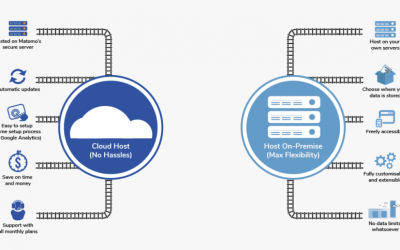As businesses increasingly adopt cloud computing technologies to drive agility, scalability, and innovation, the need for effective cloud governance and compliance becomes paramount. This whitepaper presents a strategic advisory point of view (POV) on cloud governance and compliance, exploring the challenges, best practices, and recommendations for organizations embarking on their cloud journey. By implementing robust governance frameworks and ensuring compliance with relevant regulations, businesses can leverage the full potential of the cloud while minimizing risks and maximizing value.
Introduction: The rapid adoption of cloud computing has revolutionized the way organizations operate, enabling them to access powerful computing resources, storage, and services on-demand. However, with these benefits come challenges related to data security, privacy, regulatory compliance, and operational control. To address these concerns, effective cloud governance and compliance strategies are essential. This blog provides insights and recommendations to help organizations navigate these complexities.
2. Cloud Governance:
2.1 Defining Cloud Governance:
Cloud governance encompasses the policies, processes, and controls that govern the utilization, operation, and management of cloud services within an organization. It aims to ensure that cloud resources are used efficiently, securely, and in line with organizational objectives.
2.2 Key Challenges:
- Lack of visibility and control: The dynamic nature of cloud environments can lead to a loss of visibility and control over assets, making it challenging to enforce policies consistently.
- Multi-cloud complexity: Organizations often leverage multiple cloud providers, resulting in complexity when managing governance across different platforms.
- Compliance and risk management: Organizations must ensure compliance with relevant regulations and standards while effectively managing risks associated with cloud adoption.
2.3 Best Practices:
- Establish a cloud governance framework: Develop a comprehensive framework that outlines roles, responsibilities, policies, and processes for managing cloud resources.
- Implement centralized visibility and control: Leverage cloud management tools and platforms to gain real-time visibility and enforce consistent controls across the cloud environment.
- Enable automation: Automate governance processes such as policy enforcement, resource provisioning, and compliance monitoring to improve efficiency and reduce human error.
- Foster collaboration between IT and business stakeholders: Establish cross-functional teams to ensure alignment between business objectives and cloud governance practices.
3. Cloud Compliance
3.1 Understanding Cloud Compliance:
Cloud compliance refers to the adherence to legal, industry, and regulatory requirements when using cloud services. Organizations must assess the risks associated with storing and processing data in the cloud and implement appropriate controls to ensure compliance.
3.2 Compliance Challenges:
- Data privacy and sovereignty: Organizations must address concerns related to the geographic location of data, data protection laws, and cross-border data transfers.
- Industry-specific regulations: Different industries, such as healthcare and finance, have specific compliance requirements that organizations need to adhere to when operating in the cloud.
- Auditing and reporting: Demonstrating compliance and providing audit trails can be complex in cloud environments due to the distributed nature of resources.
3.3 Best Practices:
- Conduct a comprehensive compliance assessment: Understand the regulatory landscape and assess the impact of cloud adoption on compliance obligations.
- Engage with cloud service providers (CSPs): Ensure that CSPs have appropriate security controls and compliance certifications in place to meet regulatory requirements.
- Implement data encryption and access controls: Encrypt sensitive data both in transit and at rest, and enforce granular access controls to protect data integrity and confidentiality.
- Regularly conduct compliance audits: Perform periodic audits to validate compliance with regulations and industry standards, and maintain comprehensive audit logs.
4. Conclusion:
Cloud governance and compliance are critical considerations for organizations embracing the cloud. By implementing robust governance frameworks and ensuring compliance with relevant regulations, businesses can mitigate risks, protect sensitive data, and optimize their cloud investments. Strategic advisory in cloud governance and compliance enables organizations to harness the full potential of cloud computing while maintaining security, trust, and regulatory compliance.





